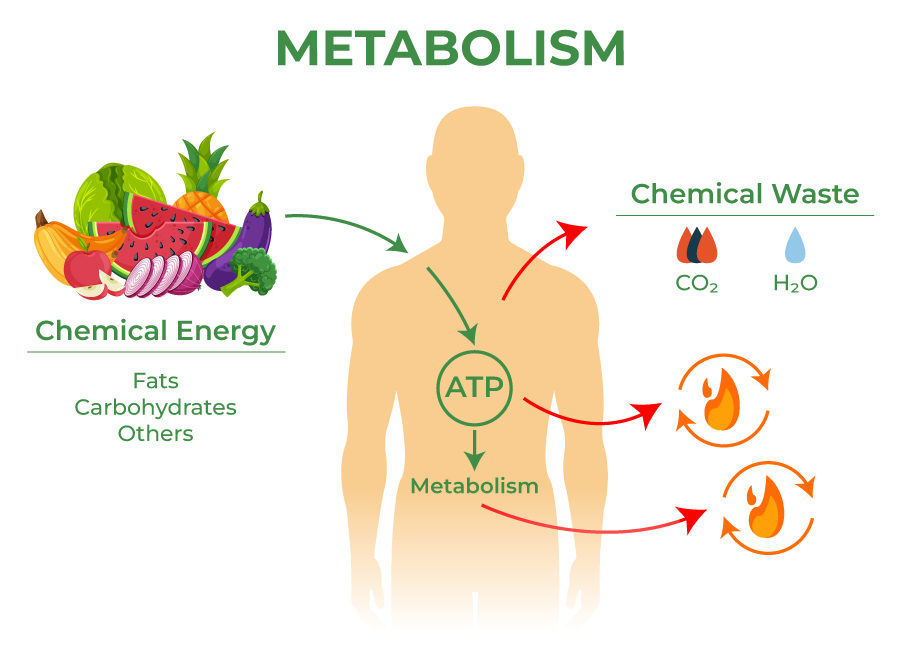
|
|
Metabolites are the intermediate molecules produced during various metabolic processes. Metabolites produced by plants are of two types – primary and secondary metabolites. The metabolites examples are antibiotics, glucose, amino acids, etc. Metabolite functions include signalling molecules, defence, and catalytic activity. In this article, we will cover metabolites, their types -primary and secondary metabolites, along with their functions and examples. Table of Content Metabolites MeaningMetabolites refer to the intermediate products of cellular metabolism catalyzed by enzymes present in the cell. Metabolites serve various functions, including providing energy, building cellular structures, signalling, coordinating activities, and defence. The metabolites are produced by plants, humans, and even microbes. Essential metabolites are crucial for growth, while non-essential ones are produced during specific developmental stages but aren’t directly involved in growth or development. Metabolites in PlantsThe metabolites produced by plants are of two types: Primary MetabolitesPrimary metabolites are chemical molecules generated during growth and development, crucial for fundamental metabolic activities like respiration and photosynthesis. Formed during the growth phase of plants, these metabolites sustain the body’s physiological functions and are termed central metabolites. They serve as intermediate products in anabolic metabolism, utilized by cells to create essential macromolecules. Also Read: Differences Between Catabolism And Anabolism Primary Metabolites ExamplesSome examples of primary metabolites in plants are: Secondary MetabolitesSecondary metabolites are chemical compounds produced by organisms that are not directly involved in growth or development but often play specialized roles in defense, signalling, or attraction. Unlike primary metabolites, which are essential for basic cellular functions, secondary metabolites are considered non-essential. Secondary metabolites are considered as the end-products of primary metabolites. These compounds are typically synthesized in response to environmental stressors or as part of specialized metabolic pathways. While not essential for survival, secondary metabolites contribute to the diversity and adaptability of organisms in various ecosystems. Secondary metabolites often play roles in interactions such as competition, predation, and mutualism. While typically limited to specific lineages or species, there is evidence of horizontal transfer across species or genera, impacting bacterial and potentially fungal growth. Research also shows how secondary metabolism can affect different species differently; for example, different types of leaf-eating marsupials in the same forest responded differently to a secondary metabolite in eucalyptus trees. Some species have evolved to resist secondary metabolites and even use them for their benefit, like monarch butterflies that can eat milkweed despite its toxins, using them to deter predators.
Secondary Metabolites in Plants Examples
Difference Between Primary and Secondary MetabolitesThe difference between primary and secondary metabolites are given below:
Human MetabolitesHuman metabolites are the byproducts formed during the body’s normal chemical processes. Human metabolites include molecules like arachidonic acid and prostaglandin, which share similar properties and are synthesized through enzyme-catalyzed reactions. Steroid hormones, derived from cholesterol with slight structural modifications, have distinct biochemical roles. Catecholamines such as norepinephrine originate from the amino acid tyrosine in an irreversible pathway.
Metabolomics studies the human metabolome, representing the complete set of metabolites in an organism, complementing gene expression and proteomic analyses. The Human Metabolome Database (HMDB) offers detailed information on small molecule metabolites found in the human body. Microbial MetabolitesMicrobial metabolites come in a wide variety of chemicals, offering a rich source for discovering new compounds useful to humans. While distinguishing between primary and secondary metabolites of microorganisms can be tricky, they often produce a mix of similar compounds. These secondary metabolites can give them an edge in their environment by inhibiting other species’ growth or helping in resource gathering.
In industrial microbiology, alcohol is a common primary metabolite used in large-scale production, particularly in fermentation for making products like beer and wine. Citric acid, from Aspergillus niger, is widely used in food, pharmaceutical, and cosmetic industries. Secondary metabolites like antibiotics (e.g., erythromycin, bacitracin) and atropine, derived from plants, play important roles in human health. Conclusion – What are Metabolites? – Primary and SecondaryIn conclusion, metabolites are intermediate products of cellular metabolism produced in plants, animals, and microbes. The plant produces two types of metabolites – primary and secondary. Primary metabolites are vital for fundamental cellular functions, serving as building blocks and energy sources necessary for survival and growth across all living organisms. In contrast, secondary metabolites are not essential and they play specialized roles like defense, signaling, and attraction. Examples include amino acids and sugars for primary metabolites, and alkaloids, flavonoids, and terpenoids for secondary metabolites.
FAQs on What are Metabolites? – Primary and SecondaryWhat is an Example of a Metabolite?
What are the 4 Examples of Secondary Metabolite?
What is Meant by Secondary Metabolite?
What Elements Influence the Level of Secondary Metabolites?
For What Reason are Optional Metabolites More Vital Than Essential Metabolites?
What is a Metabolite in Biology?
What is the Function of Primary Metabolite?
Why Biomolecules are called Metabolites?
|
Reffered: https://www.geeksforgeeks.org
| Class 11 |
Type: | Geek |
Category: | Coding |
Sub Category: | Tutorial |
Uploaded by: | Admin |
Views: | 10 |

